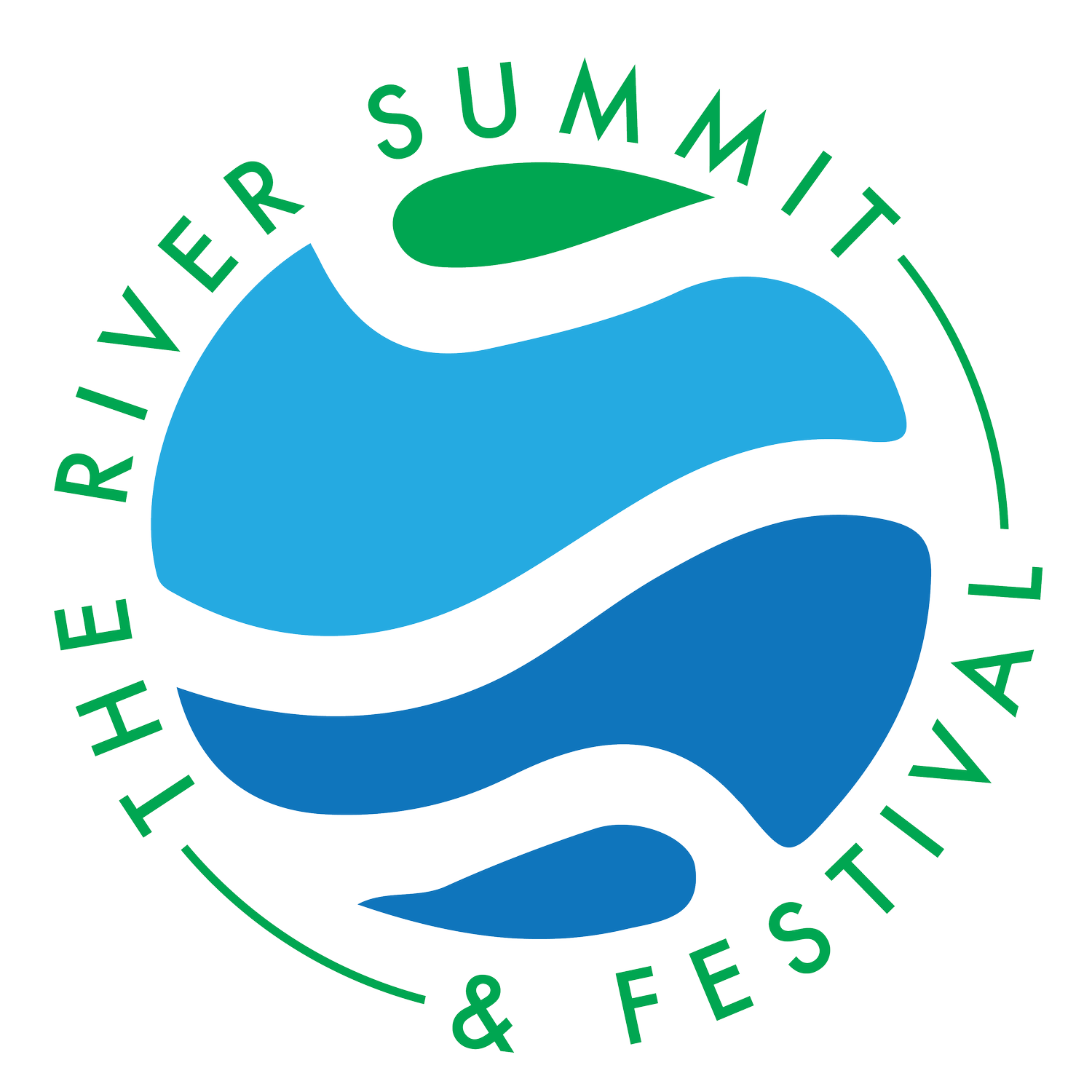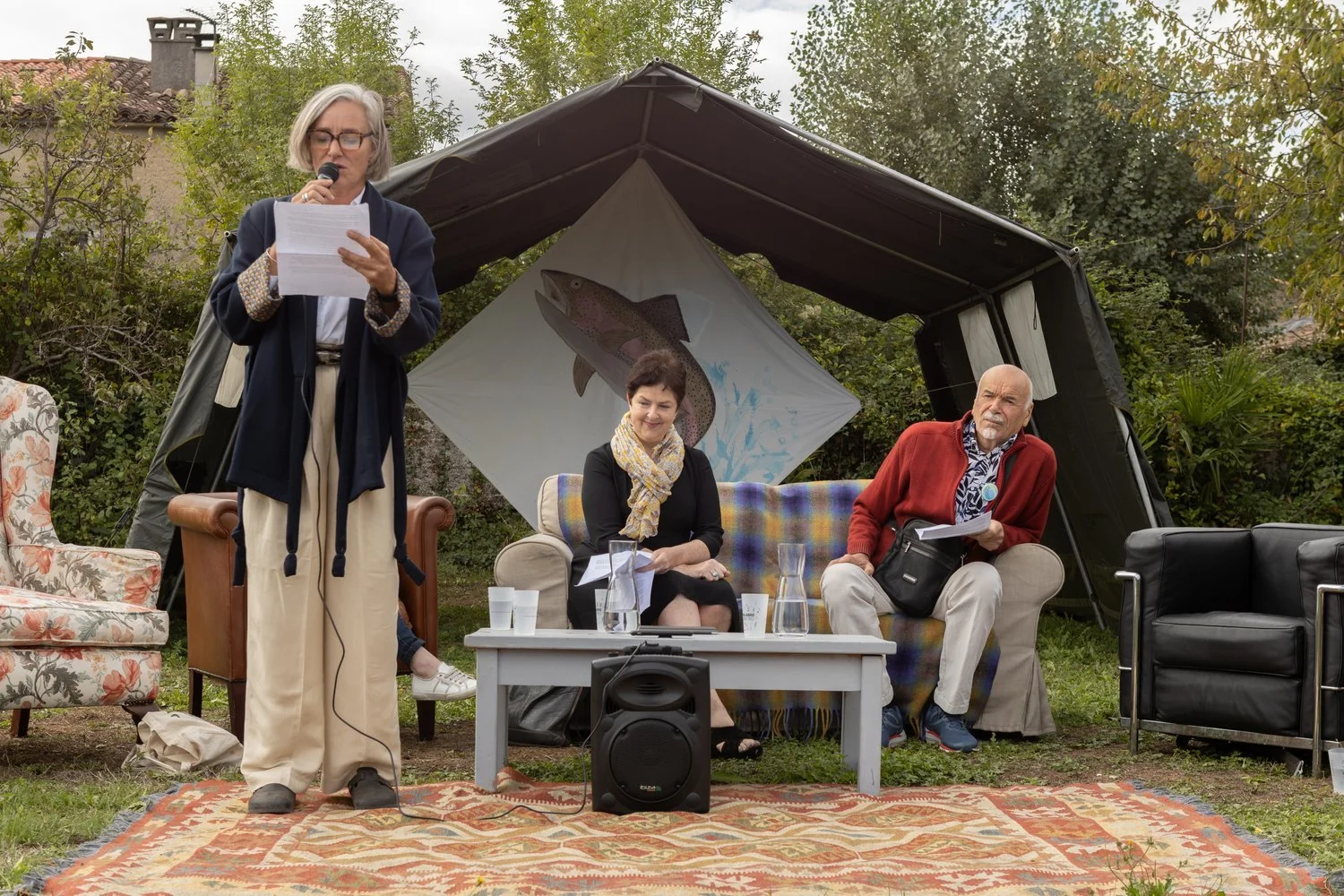Rivers, Science, and Celebration: The River Festival Report
Rivers, science, and celebration were the key elements of the first River Festival held on September 17 in Chalabre, France.
Why rivers? Why science? And why celebration?
Rivers are the arteries of the land, supplying life-giving water to flora, fauna, and us. We live next to rivers all over the world. Chalabre, for example, is fed by three rivers; the Blau, the Chalabreil, and the Hers. But we are abusing our rivers and threatening their health and well-being.
Science, including citizen science, gives us the tools to investigate the state of our rivers. Just as a doctor examines her patients, we must understand the condition of our rivers. Are they healthy? Do they suffer from ailments? What is the source of the problems?
When we celebrate something, we come together to honor it, give it significance and connect emotionally with it. Through celebrating rivers, we engage both hearts and minds.
Citizen science kicked off the River Festival. Ruth Clinton and Fiona Regan from the Dublin City University Water Institute organized a WaterBlitz two days before the Summit. Citizen scientists equipped with kits to measure phosphate and nitrate levels, sampled water from the Blau and the Hers. They took photographs and recorded the presence of algae or scum on the surface. The Water Institute is producing a map that show the present state of the Blau, the Chalabreil and the Hers.
Source (Above & Below): https://www.freshwaterwatch.org/pages/the-three-rivers-waterblitz-september-2022
Claire Zambuni, Founder of Zambuni Communications and The River Festival
The River Summit is the brainchild of Claire Zambuni. Her company specialises in environmental communication and niche festivals. Claire’s vision and passion for Chalabre and its rivers were the driving force of this celebration. She spoke of her fondness for the natural resources, the rivers, the lake, the sunrises and sunsets, the fresh produce, and the strong sense of community in Chalabre.
Solutions for our environmental challenges require accurate scientific data, and the 100 kits distributed to citizen scientists exemplify this. We also need strong relationships with specific places to connect heads and hearts.
The River Festival included delicious food, exhibitions, and the chance to be in community. Plans are already underway for future River Festivals and Summits with the hope that there will also be other destinations in Europe.
Fiona Regan, DCU Water Institute
Fiona Regan combined science and poetry in her presentation about rivers in Ireland. Fiona is Associate Professor in Environmental Sensing, and she established the Water Institute at Dublin City University. Since 2018, Dublin City University has become a leader in promoting citizens' science, which monitors rivers and identifies sources of pollution. Citizen Science co-created projects can establish a network of groups and individuals invested in their towns and surroundings. The WaterBlitz is an opportunity to investigate this magnificent part of France, which also faces the impacts of climate change.
Ireland has 70,000 km of waterways, with 40 rivers, streams, and tributaries. The River Liffey, which flows through Dublin and provides the city’s drinking water, was significantly polluted in 2019. Urban wastewater is one significant cause. Another is pollution from agriculture, which increases concentrations of phosphorous and nitrogen. This promotes the growth of algae which reduces oxygen in the water. There are also high nitrate levels in the drinking water and the groundwater.
For Fiona, poetry is a way to both celebrate and understand water. She cited the great Irish poet William Butler Yeats.
Where the wandering water gushes
In the hills above Glencar
In pools among the rushes
That scarce could bathe a star
We seek for slumbering trout
And whispering in their ears
Give them unquiet dreams…..
Climate change brings the paradox of more intensive rainfall and increased water scarcity. Understanding, monitoring, and cherishing rivers will become ever more critical.
Penelope Gane, Fish Legal
Penelope Gane gave an overview of fisheries in the UK. Penny is the Head of Practice at Fish Legal and focuses on damages to fisheries caused by sewage and industrial and agricultural pollution. The citizen scientists for Fish Legal are the anglers who know the streams and rivers intimately. Fishing rights are privately held in the UK, allowing anglers to take direct legal action, which has proven to be a powerful tool.
During the lockdown, people reconnected with local rivers and understood again how vital the connection to nature is.
Water companies were privatized in the 1980s, and so they were not subject to environmental information regulations when they came into force. Fish Legal seeks to hold polluters to account for what they are putting into the water and what they are taking out through abstraction. Being able to obtain information about these activities is key. A case against three companies went all the way to the European Court of Justice, and now these companies are subject to environmental information regulations which means that they are required by law to disclose to the public details of their activities that affect the environment.
There is a new understanding that rivers are in a bad state: only 14% in England are in good condition as mandated by the European Water Framework Directive. There are now many campaign groups concerned about the state of the rivers, and they are conducting their own analysis to determine what is actually going on. What is wrong? Who is responsible?
Public outcry has led to a growing call for investigations into what is happening. Data from new monitors on sewage outfalls show how frequently raw sewage is being spilt. Many rivers are in dire condition, especially Special Areas of Conservation that should have high levels of protection. But many of these so-called protected sites suffer from elevated levels of nutrient pollution, which is presenting challenges in the planning system as certain new developments need to show ‘nutrient neutrality’ before they can proceed.
The UK has good environmental laws but poor enforcement. There is much anger now in the UK because people understand that the regulators are not taking action even when problems have been identified. The relationship between the industry and environmental regulators has been much too cozy. Good laws are only meaningful when regulations are enforced. Fortunately, there is a new organization called the Office of Environmental Protection, and they will be looking at whether environmental regulations are properly enforced.
Jean Denat, Le Chabot
Jean Denat, who represented the organization “le Chabot,” gave us a detailed picture of the regional river situation. One central message is that water should be stored in the ground. Water should move into rivers after a long journey through the soil. A drop of water falling into the soil near Puivert should take a century to reach Cintegabelle, some 75 km away. But it now arrives in 48 hours when it falls in the River Blau and travels downstream to Cintegabelle. Water should move slowly, and wetlands are crucial to slowing the water down. Beavers have great potential to create wetlands and help the water slowly move into the ground.
Montbel Lake, only a few kilometers from Chalbre, is used for irrigation and hydroelectricity. It is also an important tourist destination. Due to this summer’s drought, the water temperature in the lake was high. Many farmers use wasteful and ineffective irrigation techniques are.
Montbel Lake is partly filled by the Lers. Water is taken out in Peyrat and returned to the Hers near Camon. This summer, the water temperature in Peyrat was 15° but increased to 21° when returned to the Hers. The Hers runs clear above Camon but has green particulate matter when it returns to the river.
The lake was initially created for irrigation, but the distribution is quite unequal: 30% of the irrigators use 80% of the water. The irrigation techniques are often wasteful and ineffective. Water in the lake evaporates rapidly and increases in temperature. Much of that water is used to irrigate maize, which is exported to other countries to fatten animals. The maize is also used to produce methane which requires fertilizers and pesticides derived from Russian gas. Agricultural lands thus become oil fields: a snake that bites its own tail.
There is a plan to divert the waters of the Touyre River to supply Montbel. This water diversion would effectively destroy the Touyre. It is an irresponsible consumerist vision of water, which is a poor response to the threats of global warming and the collapse of biodiversity.
Sewage treatment plants are often a source of problems. There are few wastewater treatment plants in this area with filtering gardens. Wastewater treatment plants pollute when they discharge into a river with reduced water flow. The Hers is depleted in Chalabre, so it is often low in water, even during winter. There should be a 5-meter strip of protected land on the banks of the rivers, but the land is frequently farmed or mowed to the edge of the river.
2022 has been an exceptional year with the drought and high temperature, but this will probably become the norm. More than 50% of the river’s headwaters are dry, which damages wetlands. It can also lead to the biological death of water and a significant loss of aquatic life.
The law states that watercourses marked on the IGN map must be respected. The Chabot organization fought to return to this law in the department of Ariége. It won the case. In the Ariège, for example, 2000 km of waterways have been saved.
If we look at the larger picture, irrigated surfaces are decreasing. Farmers say they are irrigating more efficiently, and crops are changing. Thus there is less need for water. We must discourage anachronistic projects that benefit a small number of farms and encourage intensive agriculture that consumes massive quantities of water and uses pesticides and chemical fertilizers. These outmoded forms of agriculture lead to climate change and the collapse of biodiversity.
The Chabot organization aims to redirect the heavy financing that supports intensive agriculture. Instead, we should direct funding to accelerate the adaptation of agriculture methods that prevent climate change, and support organic and small farmers. There should be zero pollution discharges from wastewater treatment plants, and we must make every effort to save our precious water resources.
Some concluding points
Fiona noted that the first data would not give us a complete picture of the pollution. It is just a start. More than 40 citizen scientists took kits to sample the water both before and after the rainfall. The Hers seems to be in good shape, but the Blau needs a bit of love.
The data reflects one point in time, but the results show higher levels of nitrates and phosphates in the Blau than in the Hers. Sometimes small rivers are more polluted due to lower volumes of water and less movement.
Citizen science is happening all over the world and has been happening for more than 50 years. Anglers and others observing the environment are an essential part of this work.
The nuclear facilities are relatively far from here, but some of the water from the Hers is directly or indirectly used to cool these facilities. This year the nuclear facilities were allowed to put hotter water back into the rivers due to the drought.
Coming together in collective legal action is an effective way to hold entities to account. In many cases, good regulations are in place, but they are often not enforced.
Fiona emphasized that it is not so much about pollution but rather about valuing water. We will have less water. We must understand the importance of water and use it wisely.







